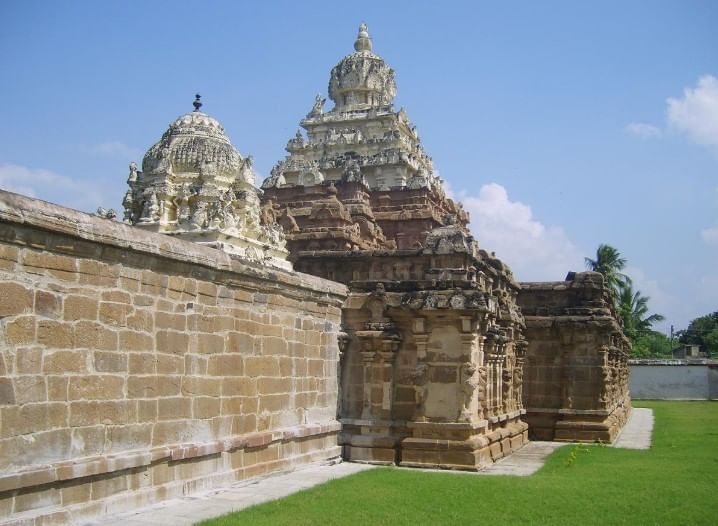Unit Test (Solutions) : The Gupta Era: An Age of Tireless Creativity | Social Science Class 7 - New NCERT PDF Download
Attempt all questions. Time: 1 hour, M.M. 30
- Question numbers 1 to 5 carry 1 mark each.
- Question numbers 6 to 8 carry 2 marks each.
- Question numbers 9 to 11 carry 3 marks each.
- Question numbers 12 to 13 carry 5 marks each.
Q.1. What title or ambition is attributed to Samudragupta in the Prayāga Praśasti inscription composed by his court poet Harisena?
a) Chakravartin
b) Maharajadhiraja
c) Dharaṇi-bandha (unifier of the Earth)
d) Satyavadi (truthful king)
Ans: c)Dharaṇi-bandha (unifier of the Earth)
Samudragupta is described as dharaṇi-bandha (unifier of the Earth) by his court poet Harisena in the Prayāga Praśasti inscription.
Q.2. Who was the author of the prayāga praśhasti inscription?
a) Kālīdāsa
b) Harisena
c) Āryabhaṭa
d) Varāhamihira
Ans: b) Harisena
The prayāga praśhasti inscription was authored by Harisena, who was a court poet during the reign of Chandragupta II.
Q.3. The Gupta Empire covered most of which region of India?
a) South India
b) North and West India
c) Northeast India
d) Central India only
Ans: b) North and West India
The Gupta Empire primarily covered North and West India, marking a significant period of cultural and political development in these regions.
Q.4. The capital of the Pallavas was __________.
Ans: Kanchipuram
The capital of the Pallavas, Kanchipuram, was a significant center of learning and culture in ancient South India, often referred to as the 'city of a thousand temples'. Its prominence grew as the Pallavas consolidated their power in the region.

Q5. Who wrote the Āryabhațīya? (1 mark)
Ans: Āryabhaṭa wrote the Āryabhaṭīya, a significant work in mathematics and astronomy.
Q6. Why is the Gupta period called the 'classical age' of India? (2 marks)
Ans: The Gupta period is called the 'classical age' of India due to peace and stability, flourishing Sanskrit literature (e.g., Kālidāsa), scientific progress by scholars like Āryabhaṭa, advances in art and architecture, and royal patronage of learning, including Nālandā University.
Q7. What was the significance of the Iron Pillar in Delhi? (2 marks)
Ans: The Iron Pillar in Delhi is more than 1,600 years old and was made during the time of Chandragupta II. It was first placed near the Udayagiri caves and later moved to Delhi. The pillar is dedicated to Vishnu and has writings praising the king. It has not rusted even after so many years, showing the great metalwork skills of ancient India.
Q8. How did the Guptas use matrimonial alliances to strengthen their empire? (2 marks)
Ans: The Guptas used marriage alliances to build friendly relations with neighbouring kingdoms. For example, Chandragupta II's daughter, Prabhāvatī Gupta, married a prince of the Vākāṭaka dynasty. These alliances helped maintain peace and increased the Guptas’ influence without war.
Q9. What were the key features of Gupta society as described by Faxian? (3 marks)
Ans: Faxian, the Chinese traveller, visited India in the early 5th century CE and recorded his observations of Gupta society. His insights highlight several key features:
- Population and Happiness: The people were numerous and content, living without the need for household registrations or constant official oversight.
- Agricultural Practices: Farmers on royal land paid a portion of their grain as tax, indicating a structured agricultural system.
- Employment: The king's guards and attendants received salaries, reflecting a formalised system of governance and public service.
- Urban Prosperity: Cities were described as the greatest in the region, with rich and prosperous inhabitants who practiced kindness and righteousness.
- Charity and Care: Wealthy merchants established houses for charity, ensuring that the poor, orphans, and sick received care, food, and medicines.
- Infrastructure: The cities maintained good order, with well-kept lanes and beautiful homes, showcasing a thriving urban environment.
Q10. Describe the contributions of Kālidāsa to Sanskrit literature. (3 marks)
Ans: Kālidāsa is a pivotal figure in Sanskrit literature, known for his exceptional poetic and dramatic works. His contributions include:
- Meghadūtam (The Cloud Messenger): A celebrated poem that narrates the tale of a yakṣha sending a message to his beloved through a cloud, showcasing deep emotions and vivid descriptions of North Indian landscapes.
- Shakuntala: A renowned play that explores themes of love and destiny, highlighting the beauty of human emotions and relationships.
- Vikramorvasiyam: Another significant play that combines romance and mythology, further establishing his reputation as a master playwright.
Kālidāsa's works are characterised by their rich imagery, emotional depth, and mastery of language, making him a cornerstone of classical Indian literature.
Q11. How did the Pallavas contribute to art and architecture? (3 marks)
Ans: The Pallavas made significant contributions to art and architecture during their reign. Their influence is evident in the following areas:
- The Pallavas were known for their impressive temples and rock-cut caves, many of which were dedicated to Shiva.
- The capital, Kanchipuram, often referred to as the 'city of a thousand temples', became a major centre for learning and culture.
- They fostered an environment that encouraged artistic expression, leading to the creation of intricate sculptures and architectural designs.
Q12. Explain the contributions of Āryabhața and Varāhamihira to science during the Gupta period. (5 marks)
Ans: Āryabhaṭa and Varāhamihira made significant contributions to science during the Gupta period, particularly in mathematics and astronomy.
- Āryabhaṭa lived around 500 CE in Kusumapura (near modern Patna). He authored the Aryabhatiya, a key text in mathematics and astronomy.
- He introduced formulas to calculate the movements of the Sun, Moon, and planets, and proposed that the Earth rotates on its axis, explaining day and night.
- Āryabhaṭa estimated the length of a year as 365 days, 6 hours, 12 minutes, and 30 seconds, which is remarkably close to the modern figure.
- He also provided accurate explanations for solar and lunar eclipses and offered a fair estimate of the Earth's size.
Varāhamihira, a contemporary of Āryabhaṭa, was a mathematician, astronomer, and astrologer based in Ujjayinī.
- His encyclopaedic work, Brihat Samhita, covered various subjects, including astronomy, astrology, weather forecasting, architecture, and agriculture.
- Varāhamihira's ability to observe and apply logical reasoning made him a pioneer in scientific thought.
Both scholars laid the groundwork for future advancements in science, influencing generations of thinkers in India and beyond.
Q13. Discuss how the Guptas promoted art, architecture, and literature in their empire. (5 marks)
Ans: The Gupta Empire significantly advanced art, architecture, and literature during its reign. Here are some key contributions:
- Art: The Guptas fostered a vibrant artistic culture. Notable centres like Sārnāth produced exquisite sculptures, particularly of the Buddha.
- Architecture: The era is famed for its stunning temples and rock-cut caves, such as the Ajanta Caves, which feature intricate paintings and carvings.
- Literature: This period saw the flourishing of Sanskrit literature, with works by famous poets like Kālidāsa and the compilation of significant texts.
- Science and Mathematics: Scholars like Āryabhaṭa made groundbreaking advancements in mathematics and astronomy, laying the foundation for future developments.
- Education: Institutions like Nalanda University became prominent centres of learning, attracting students from various regions.
Overall, the Gupta Empire's support for creativity and scholarship established a rich cultural legacy that continues to influence India today.
|
23 videos|204 docs|12 tests
|
FAQs on Unit Test (Solutions) : The Gupta Era: An Age of Tireless Creativity - Social Science Class 7 - New NCERT
| 1. What are the key factors that contribute to the land becoming sacred in different cultures? |  |
| 2. How do historical events influence the perception of land as sacred? |  |
| 3. Can the concept of sacred land differ between religions? |  |
| 4. What role does nature play in defining sacred land? |  |
| 5. How does the sanctity of land affect community identity and practices? |  |
















